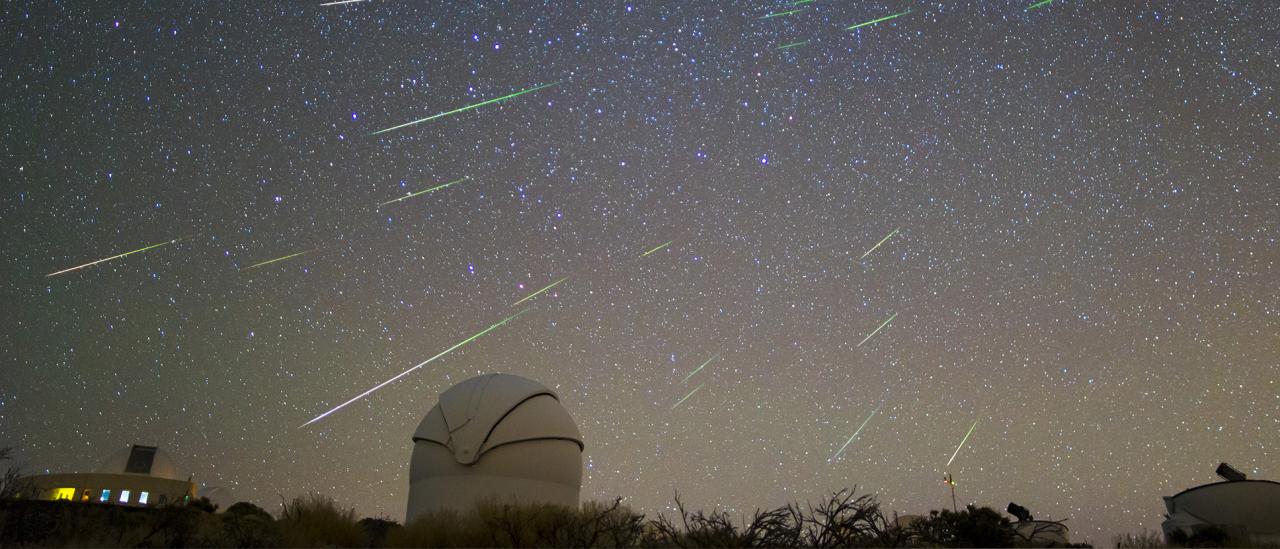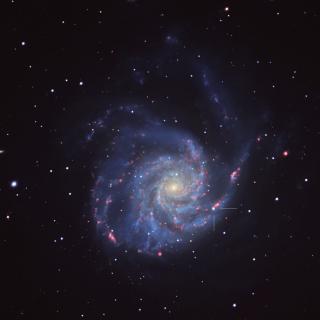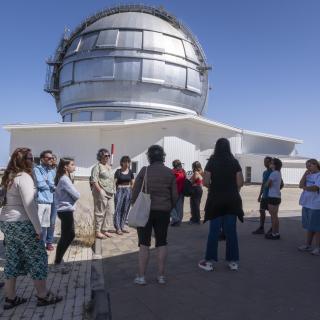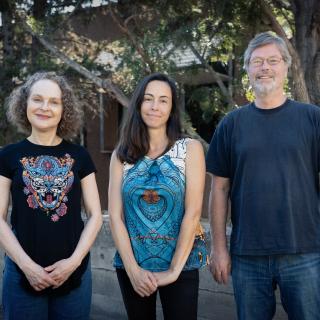On the night of 12th to 13th August we will be able to enjoy the maximum of the Perseids. This will be broadcast live, from the Teide Observatory (Tenerife) and from the Roque de los Muchachos Observatory (La Palma) on the sky-live.tv channel on the night of August 12th, with the collaboration of the Energy Efficiency Laboratories (EELabs) project of the Instituto de Astrofísica de Canarias (IAC) and of the Program of Astronomy Outreach / SODECAM - Service for Innovation of the Cabildo of the Island of La Palma.
Every year at these dates the Earth passes through the cloud of dust and rocks which Comet Swift-Tuttle leaves behind on each of its orbits around the Sun. As a result, from mid-July until the end of August we can see the activity of the Perseids, also known as “Saint Lawrence’s Tears)
For 2020 the Perseids will show activity from 17th July to 24th August. The maximum is expected between 13.00 h and 16.00 h UT on 12th August. In Europe the nights of 11th, to 12th and 12th to13th August will show the maximum activity of this meteor shower. We know, from the best models, that the activity of the Perseids at maximum isa round 100 meteors per hour (ZHR, or zenithal hourly rate). This year the best time to observe them will be during the first hours after sunset, until around midnight, because the waning moon, with 47% of its disc illuminated, will make them difficult to observe at the end of the night.
Miquel Serra-Ricart, astronomer at the IAC comments “ This year the Moon will not be a real problema for the observation of the most famous meteor show of the year, The Perseids. We must be patient, as usual, and in ten minutes we should certainly be counting tens of meteors if we keep our eyes on a fixed point in the sky”
What are “shooting stars”?
“Shooting stars” are what we call the small particles of dust, of different sizes, some smaller than grains of sand, which are thrown off by comets or asteroids as they proceed along their orbits round the Sun. The resulting cloud of particles (called meteoroids) due to the thawing out of a comet caused by the Sun’s heat, is dispersed along the orbit of the comet, and the Earth passes through this every year on its orbit around the Sun. During this encounter the dust particles disintegrate as they enter the Earth’s atmosphere at high velocity, giving rise to the well know luminous trails whose scientific name is meteors. (A meteorite is a meteor big enough to survive its passage through the atmosphere and land on the surface of the Earth)
The progenitor of the Perseids is Comet Swift-Tuttle, which was discovered in 1862, and which, with a diameter of some 26 km, is currently the largest object which makes periodic approaches to the Earth.
Families counting meteors
During every meteor shower amateur astronomers make meteor counts, and they send them to the International Meteor Organization (IMO) to calculate the activities of the showers. For the 2018 Perseids the Instituto de Astrofísica de Canarias (IAC) and the Polytechnic University of Madrid (UPM) have united to produce the citizen science project Contadores de Estrellas. Counters of Stars, funded by the FECYT ( Spanish Foundation for Science and Technology). Together they have produced a didactic activity in which any citizen can collaborate in making these counts.
The guide descibes the procedure to follow via certain apps, which have to be previously installed on their cellphones, and using very simple material. The challenge is to procure that, in a very simple way, the general public can participate and understand this astronomical phenomenon, as well as other features of the sky which are explained in the guide. This is designed to be carried out in the family, or in teams, because the event occurs, usually, during the holidays and it is usual for citizeds to take advantage of the opportunity to observe.
The project also includes a photography competition which will allow citizens to share their photos of the night of the Perseids and win prizes related to astronomy.
Live from the Canary Observatories
Within the framework of the outreach activities of the Energy Efficiency Laboratories (EELabs) project, the sky-live.tv channel will broadcast live this meteor shower from the Teide Observatory, under its coordinator Miquel Serra-Ricart. At the Roque de los Muchachos Observatory, the astrophotographer Antonio González, in collaboration with the Program of Astronomy Outreach / SODECAM - Service of Innovation of the Cabildo of the Island of La Palma will aso broadcast images of this astronomical event, from the site of the MAGIC telescopes, and the prototype Large Size Telescope (LST-1) which will form a part of the Cherenkov Telescope Array (CTA).
The appointment will be next Wednesday 12 August at 23:15 UT (13 August 00:15 local time in the Canary Islands, 01:15 CEST, local time in Europe).
EELabs (eelabs.eu) is a project funded by the Programme INTERREG V-A MAC 2014-2020, cofinanced by FEDER (European Fund for Regional Development) of the European Union, under contract number MAC2/4.6d/238. Five centres in Macaronesia (IAC, ITER, ULPGC, SPEA-Azores and SPEA-Madeira) work in EELabs. The objective of EELabs is to build laboratories to measure the energy efficiency of the artificial night lighting in protected natural areas in Macaronesia (the Canaires, Madeira, and the Azores).
Three Spanish supercomputing centres: the Centro Extremeño de Tecnologías Avanzadas (CETA-CIEMAT), the Consorci de Serveis Universitaris de Catalunya (CSUC) and the Instituto de Astrofísica de Canarias (IAC) will collaborate in the distribution of the web portal broadcast (sky-live.tv).
Didactic material
Star Counters
http://www.contadoresdeestrellas.org/
Star Counters Guide
Audiovisual material
Sequences of the best Perseids 2016 and 2018 from the Teide Observatory
High quality images of meteor showers
https://www.flickr.com/photos/65131760@N06/sets/72157634760969777/








